Year 1887 (1887) | ||
 | ||
Dimensions 105.5 cm × 60.5 cm (41½ in × 23¾ in) Location | ||
Japonaiserie (English: Japanesery) was the term the Dutch post-impressionist painter Vincent van Gogh used to express the influence of Japanese art.
Contents
- Influence of Japanese art on Van Gogh
- The Courtesan after Eisen
- Copies of Hiroshige prints
- Example ukiyo e colour woodblock prints
- In the Van Gogh Museum Amsterdam
- Outside Holland
- References
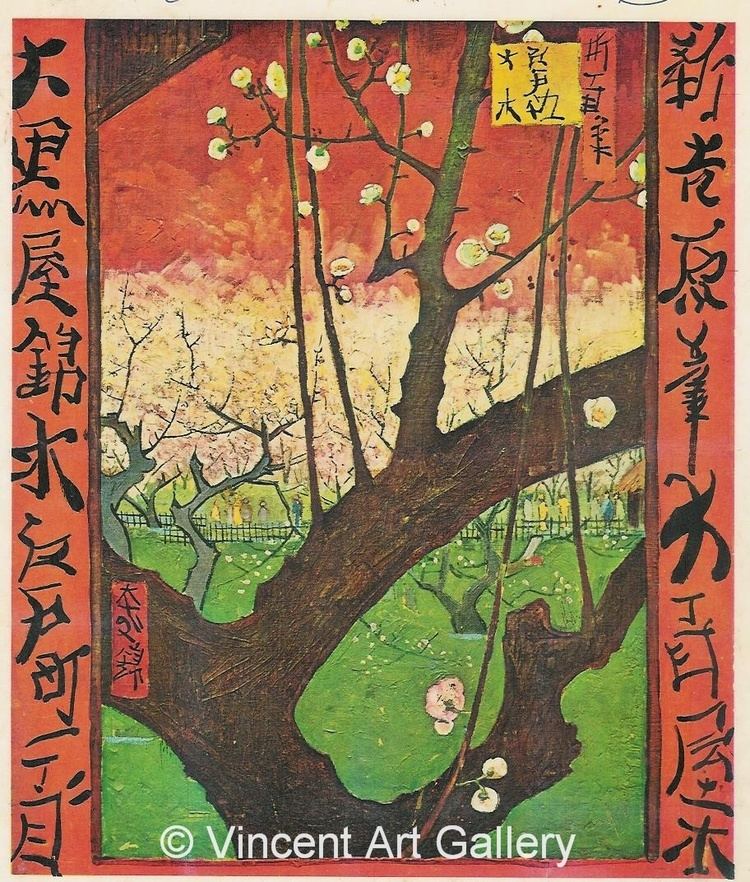
Before 1854 trade with Japan was confined to a Dutch monopoly and Japanese goods imported into Europe were for the most part confined to porcelain and lacquer ware. The Convention of Kanagawa put an end to the 200-year-old Japanese foreign policy of Seclusion and opened up trade between Japan and the West.
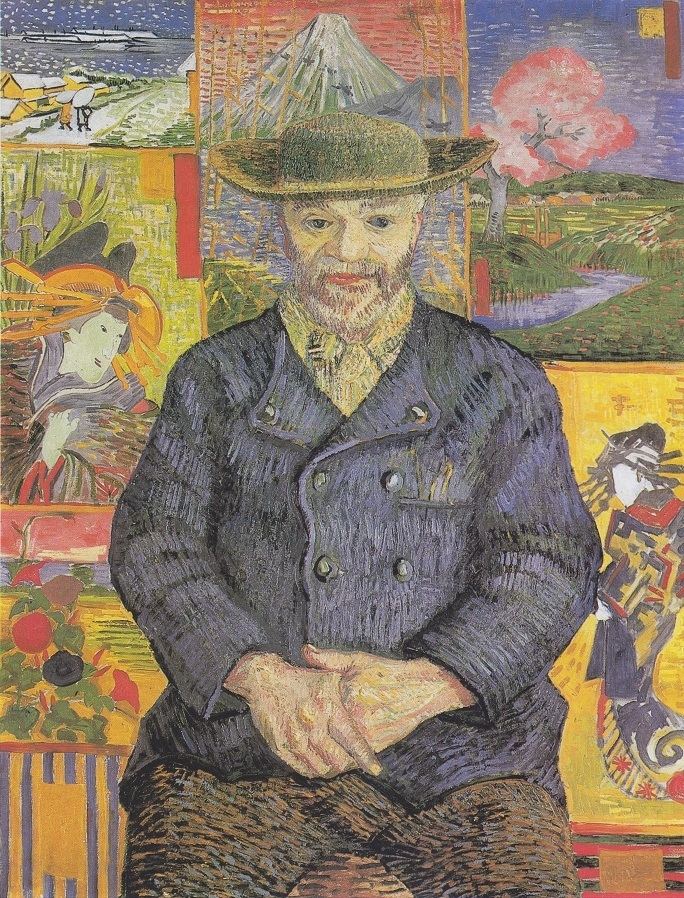
Artists including Manet, Degas and Monet, followed by Van Gogh, began to collect the cheap colour wood-block prints called ukiyo-e prints. For a while Vincent and his brother Theo dealt in these prints, and they eventually amassed hundreds of them, now housed in the Van Gogh Museum, Amsterdam.
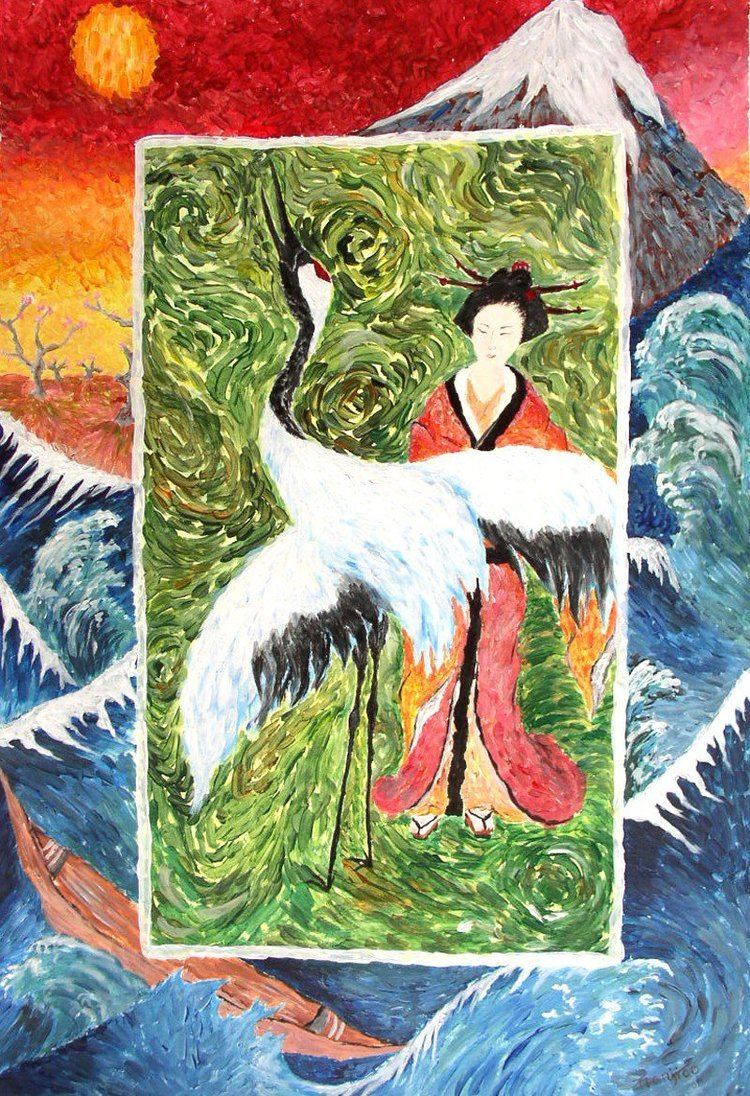
In a letter to Theo dated about 5 June 1888 Vincent remarks
About staying in the south, even if it’s more expensive—Look, we love Japanese painting, we’ve experienced its influence—all the Impressionists have that in common—[so why not go to Japan], in other words, to what is the equivalent of Japan, the south? So I believe that the future of the new art still lies in the south after all.
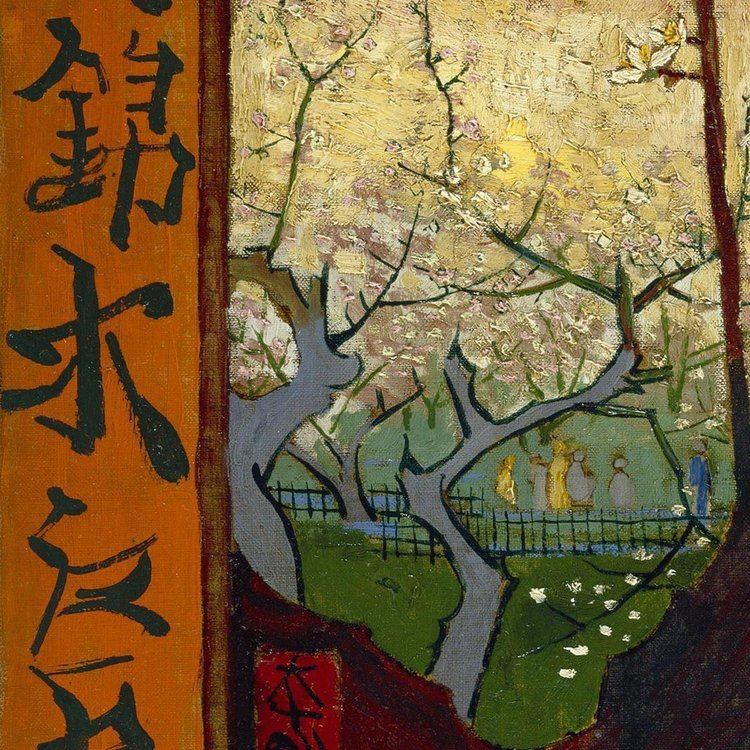
A month later he wrote,
All my work is based to some extent on Japanese art...
Influence of Japanese art on Van Gogh
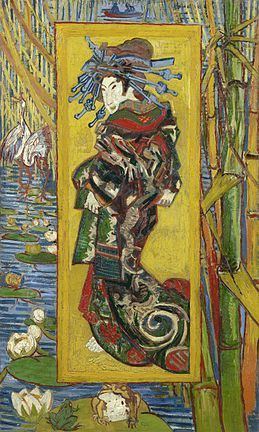
Van Gogh's interest in Japanese ukiyo-e prints dates from his time in Antwerp when he was also interesting himself in Delacroix's theory of colour and where he used them to decorate his studio.
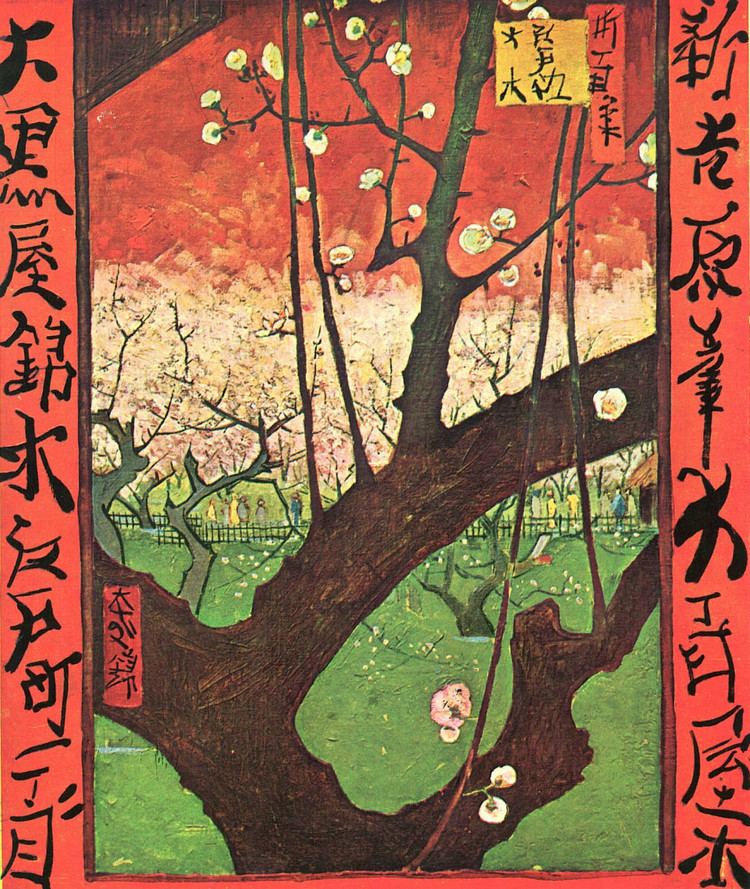
One of De Goncourt's sayings was "Japonaiserie for ever". Well, these docks [at Antwerp] are one huge Japonaiserie, fantastic, singular, strange ... I mean, the figures there are always in motion, one sees them in the most peculiar settings, everything fantastic, and interesting contrasts keep appearing of their own accord.
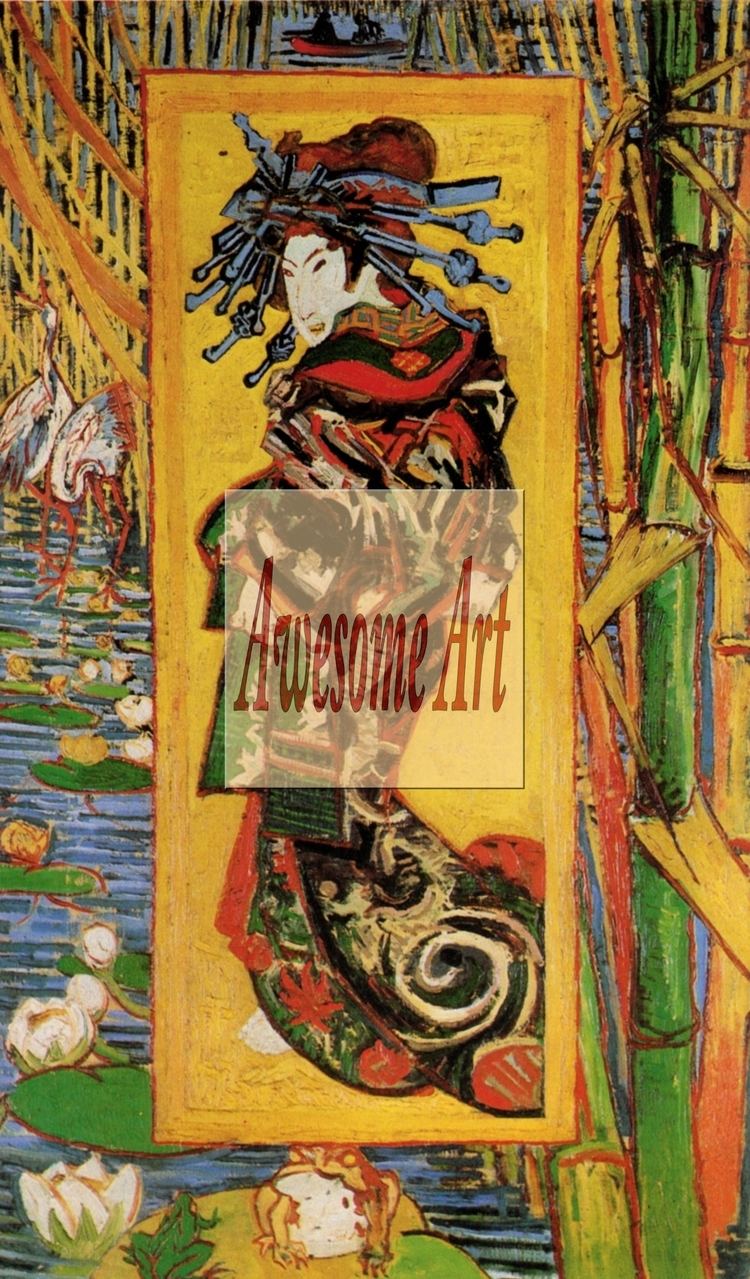
During his subsequent stay in Paris, where Japonisme had become a fashion influencing the work of the Impressionists, he began to collect ukiyo-e prints and eventually to deal in them with his brother Theo. At that time he made three copies of ukiyo-e prints, The Courtesan and the two studies after Hiroshige.
Van Gogh developed an idealised conception of the Japanese artist which led him to the Yellow House at Arles and his attempt to form a utopian art colony there with Paul Gauguin.
His enthusiasm for Japanese art was later taken up by the Impressionists. In a letter of July 1888 he refers to the Impressionists as the "French Japanese". He still strongly admired the techniques of Japanese artists, however, writing to Theo in September 1888:
I envy the Japanese the extreme clarity that everything in their work has. It's never dull, and never appears to be done too hastily. Their work is as simple as breathing, and they do a figure with a few confident strokes with the same ease as if it was as simple as buttoning your waistcoat.
Van Gogh's dealing in ukiyo-e prints brought him into contact with Siegfried Bing, who was prominent in the introduction of Japanese art to the West and later in the development of Art Nouveau.
Characteristic features of ukiyo-e woodprints include their ordinary subject matter, the distinctive cropping of their compositions, bold and assertive outlines, absent or unusual perspective, flat regions of uniform colour, uniform lighting, absence of chiaroscuro, and their emphasis on decorative patterns. One or more of these features can be found in numbers of Vincent's paintings from his Antwerp period onwards.
The Courtesan (after Eisen)
The May 1886 edition of Paris Illustré was devoted to Japan with text by Tadamasa Hayashi who may have inspired van Gogh's utopian notion of the Japanese artist:
Just think of that; isn't it almost a new religion that these Japanese teach us, who are so simple and live in nature as if they themselves were flowers?
And we wouldn't be able to study Japanese art, it seems to me, without becoming much happier and more cheerful, and it makes us return to nature, despite our education and our work in a world of convention.
The cover carried a reverse image of a colour woodblock by Keisai Eisen depicting a Japanese courtesan or Oiran. Vincent traced this and enlarged it to produce his painting.
Copies of Hiroshige prints
Van Gogh made copies of two Hiroshige prints. He altered their colours and added borders filled with calligraphic characters he borrowed from other prints.
